Practical Synthetic Organic Chemistry: Reactions, Principles, and Techniques 2nd Edition, ISBN-13: 978-1119448853
[PDF eBook eTextbook]
- Publisher: Wiley; 2nd edition (February 5, 2020)
- Language: English
- 848 pages
- ISBN-10: 1119448859
- ISBN-13: 978-1119448853
Presents the principles, techniques, and reactions of practical synthetic organic chemistry.
Practical Synthetic Organic Chemistry: Reactions, Principles, and Techniques, Second Edition is a valuable desktop reference for professionals working in and students studying organic chemistry or related fields.
Building on the framework of the first edition, it exemplifies the majority of useful reactions and highlights the most reliable experimental conditions selected by industrial process chemists from pharmaceutical companies. It provides the information necessary for a chemist to strategically plan a synthesis, rapidly select reagents and procedures to maximize success in the laboratory.
In Practical Synthetic Organic Chemistry: Reactions, Principles, and Techniques, Second Edition, reaction chapters offer information on the basics of the reaction, the synthetic procedure(s), and scope of the reaction. Later chapters discuss practical solvents and green chemistry concepts. It also guides the reader to a wealth of useful references from the primary literature.
- Consolidates all the key advances/concepts in one book, covering the most important reactions in organic chemistry, including substitutions, additions, eliminations, rearrangements, oxidations, and reductions
- Features new content on recent advances in CH activation, photoredox and electrochemistry, continuous chemistry, and the application of biocatalysis in synthesis
- Updates chapters to include new and additional examples of chemistry that have been demonstrated at a practical scale
This book highlights the most important reactions, addressing basic principles, advantages/ disadvantages of the methodology, mechanism, and techniques for achieving laboratory success.
Table of Contents:
List of Contributors xxxi
Preface xxxiii
1 Aliphatic Nucleophilic Substitution 1Jade D. Nelson
1.1 Introduction 1
1.2 Oxygen Nucleophiles 1
1.3 Phosphorus Nucleophiles 21
1.4 Sulfur Nucleophiles 21
1.5 Nitrogen Nucleophiles 26
1.6 Halogen Nucleophiles 38
1.7 Carbon Nucleophiles 47
1.8 Nucleophilic Substitution at a Sulfonyl Sulfur Atom 60
2 Addition to Carbon-Heteroatom Multiple Bonds 65Prantik Maity and Rajappa Vaidyanathan
2.1 Introduction 66
2.2 Addition of Water to Aldehydes and Ketones: Formation of Hydrates 66
2.3 Addition of Bisulfite to Aldehydes and Ketones 67
2.4 The Addition of Alcohols to Aldehydes and Ketones: Acetal Formation 69
2.5 The Addition of Thiols to Aldehydes and Ketones: S,S-Acetal Formation 71
2.6 Reductive Etherification 72
2.7 Addition of NH3, RNH2, and R2NH 74
2.8 Formation of Hydrazones 79
2.9 Formation of Oximes 80
2.10 The Formation of gem-Dihalides from Aldehydes and Ketones 80
2.11 The Aldol Reaction 82
2.12 Allylorganometallics: Stannane, Borane, and Silane 92
2.13 The Nozaki–Hiyama–Kishi Reaction 97
2.14 Addition of Transition Metal Alkynylides to Carbonyl Compounds 99
2.15 Addition of Organometallic Reagents to Carbonyls 100
2.17 The Reformatsky Reaction 104
2.18 The Wittig Reaction 106
2.19 Horner–Wadsworth–Emmons Reaction 108
2.20 Peterson Olefination 109
2.21 Julia–Lythgoe Olefination 110
2.22 Tebbe Methylenation 112
2.23 The Mannich Reaction 113
2.24 The Strecker Reaction 115
2.25 Hydrolysis of Carbon–Nitrogen Double Bonds 117
2.26 Conversion of Carboxylic Acids to Acyl Chlorides 118
2.27 Synthesis of Acyl Fluorides from Carboxylic Acids 122
2.28 Formation of Amides from Carboxylic Acids 123
2.29 Formation of Amides from Esters 130
2.30 Hydrolysis of Acyl Halides 132
2.31 Conversion of Carboxylic Acids to Esters 132
2.32 Hydrolysis of Amides 136
2.33 Conversion of N-Acyloxazolidinones to Other Carboxyl Derivatives 139
2.34 Alcoholysis of Amides 140
2.35 Hydrolysis of Esters 141
2.36 Transesterification 143
2.37 Alkyl Thiol Addition to Esters 144
2.38 Addition of Organometallic Reagents to Carboxylic Acid Derivatives 145
2.39 The Kulinkovich Cyclopropanation 149
2.40 Synthesis of Acyl Cyanides 150
2.41 The Ritter Reaction 151
2.42 Thorpe Reaction 154
2.43 Addition of Organometallic Reagents to Nitriles 155
2.44 Conversion of Nitriles to Amides, Esters, and Carboxylic Acids 155
2.45 Conversion of Nitriles to Thioamides 158
2.46 The Addition of Ammonia or Amines to Nitriles 160
2.47 The Addition of Alcohol to Nitriles 161
2.48 Alkyl Thiol Addition to Nitriles 162
2.49 The Blaise Reaction 162
2.50 The Addition of Alcohols to Isocyanates 163
2.51 The Addition of Amines and Amides to Isocyanates 164
2.52 The Formation of Xanthates 165
2.53 The Addition of Amines to Carbon Dioxide 166
2.54 The Addition of Amines to Carbon Disulfide 167
2.55 Addition of Organometallic Reagents to Carbon Dioxide 167
3 Addition to Carbon–Carbon Multiple Bonds 169John A. Ragan
3.1 Introduction 169
3.2 Hydrogen–Halogen Addition (Hydrohalogenation) 169
3.3 Hydrogen–Oxygen Addition 173
3.4 Hydrogen–Nitrogen Addition (Hydroamination) 178
3.5 Hydrogen–Carbon Addition (Hydroalkylation) 180
3.6 Halogen–Halogen Addition 191
3.7 Hydroxy–Halogen Addition 192
3.8 Amino–Halogen Addition 194
3.9 Carbon–Halogen Addition 194
3.10 Oxygen–Oxygen Addition 196
3.11 Oxygen–Nitrogen Addition 202
3.12 Nitrogen–Nitrogen Addition 204
3.13 Carbon–Oxygen Addition 206
3.14 Carbon–Nitrogen Addition 211
3.15 Carbon–Carbon Addition 212
4 Nucleophilic Aromatic Substitution 231Stéphane Caron and Emma McInturff
4.1 Introduction 231
4.2 Oxygen Nucleophiles 232
4.3 Sulfur Nucleophiles 234
4.4 Nitrogen Nucleophiles 236
4.5 Halogen Nucleophiles 241
4.6 Carbon Nucleophiles 243
4.7 ortho-Arynes 245
5 Electrophilic Aromatic Substitution 247
Stéphane Caron and Emma McInturff
5.1 Introduction 247
5.2 Nitrogen Electrophiles 247
5.3 Sulfur Electrophiles 250
5.4 Halogenation 253
5.5 Carbon Electrophiles 257
6 Selected Catalytic Reactions 269Sebastien Monfette, Adam R. Brown, Pascal Dubé, Nathan D. Ide, Chad A. Lewis, Jared L. Piper, Shashank Shekhar, and Shu Yu
6.1 Introduction 269
6.2 Organoboron Reagents:The Suzuki–Miyaura Coupling 270
6.3 Organomagnesium Reagents: Kumada–Corriu Coupling 282
6.4 Organozinc Reagents: Negishi Coupling 287
6.5 Cross-Electrophile Coupling 291
6.6 Organotin Reagents: The Stille Coupling (Migita-Stille Reaction) 292
6.7 Cross-Coupling Reactions with Organosilicon Compounds 295
6.8 Metal-catalyzed Coupling of Alkynes (Sonogashira Coupling) 296
6.9 Metal-Catalyzed Coupling of Alkenes (Heck Coupling) 298
6.10 Enolate Arylations 303
6.11 Pd- and Cu-Catalyzed Aryl C—N Bond Formation 306
6.12 Pd- and Cu-Catalyzed Aryl C—O Bond Formation 320
6.13 Pd- and Cu-Catalyzed Aryl C—S Bond Formation 322
6.14 Aryl C—B Bond Formation 324
6.15 Pd-Catalyzed Aryl C—CN Bond Formation 327
6.16 Metal-Catalyzed Allylic Substitution 329
6.17 Catalytic Metal-Mediated Methods for Fluorination 337
6.18 Selected Metal-Mediated C—H Functionalization 347
6.19 C—X Bond Forming Reactions via Borrowed Hydrogen Methodologies 357
6.20 Alkene and Alkyne Metathesis Reactions 362
6.21 Organocatalysis 369
7 Rearrangements 377David H. Brown Ripin and Chad A. Lewis
7.1 Introduction 377
7.2 [1,2]-Rearrangements 377
Other Rearrangements 402
7.3 Other Rearrangements 402
7.4 Miscellaneous Migrations 420
8 Eliminations 425Sally Gut Ruggeri
8.1 Introduction 425
8.2 Formation of Alkenes 425
8.3 Formation of Dienes 438
8.4 Formation of Alkynes 442
8.5 Formation of C=N bonds 444
8.6 Formation of Nitriles 445
8.7 Formation of Ketenes and Related Compounds 447
8.8 Fragmentations 449
8.9 Dehydrating Reagents 451
9 Reductions 455Sally Gut Ruggeri, Stéphane Caron, Pascal Dubé, Nathan D. Ide, Kristin E. Price Wiglesworth, John A. Ragan, and Shu Yu
9.1 Introduction 455
9.2 Reduction of C—C Bonds 455
9.3 Reduction of C—N Bonds 471
9.4 Reduction of C—O Bonds 479
9.5 Reduction of C—S Bonds 494
9.6 Reduction of C—X Bonds 500
9.7 Reduction of Heteroatom–Heteroatom Bonds 504
10 Oxidations 513Eric C. Hansen, Robert Perkins, and David H. Brown Ripin
10.1 Introduction 513
10.2 Oxidation of C—C Single and Double Bonds 514
10.3 Oxidation of C—H Bonds 520
10.4 Oxidation of Carbon–Oxygen Bonds and at Carbon Bearing an Oxygen Substituent 536
10.5 Oxidation of Aldehydes to Carboxylic Acids and Derivatives 543
10.6 Oxidation of Carbon–Nitrogen Bonds and at Carbon Bearing a Nitrogen Substituent 546
10.7 Oxidation of Nitrogen Functionalities 548
10.8 Oxidation of Sulfur and at Carbon Adjacent to Sulfur 555
10.9 Oxidation of Other Functionality 561
11 Selected Free Radical Reactions 563Christophe Allais, Eric C. Hansen, Nathan D. Ide, Robert J. Perkins, and Elizabeth C. Swift
11.1 Introduction 563
11.2 Radical Reactions via Chemical Initiation 563
11.3 Photoredox Catalysis 575
11.4 Electrochemical Methods 583
12 Synthesis of “Nucleophilic” Organometallic Reagents 591David H. Brown Ripin and Adam R. Brown
12.1 Introduction 591
12.2 Synthesis of “Nucleophilic” Organometallic Reagents 592
12.3 Strategies for Metalating Heterocycles 615
12.4 Reactions of “Nucleophilic” Organometallic Reagents 618
13 Synthesis of Common Aromatic Heterocycles 621Stéphane Caron
13.1 Introduction 621
13.2 Pyrroles 623
13.3 Indoles 624
13.4 2-Indolinones (Oxindoles) 626
13.5 Isatins (2,3-Indolindiones) 628
13.6 Carbazoles 628
13.7 Pyrazoles 629
13.8 Indazoles 630
13.9 Imidazoles and Benzimidazoles 631
13.10 1,2,3-Triazoles and Benzotriazole 633
13.11 1,2,4-Triazoles 635
13.12 Tetrazoles 635
13.13 Dihydropyridines 637
13.14 Pyridines 637
13.15 Quinolines 639
13.16 Quinolinones and 2-Hydroxyquinolines 641
13.17 Isoquinolines 642
13.18 Isoquinolinones 643
13.19 Quinolones (4-Hydroxyquinolines) 644
13.20 Pyrimidines and Pyrimidones 645
13.21 Quinazolines and Quinazolinones 647
13.22 Pyrazines and Quinoxalines 648
13.23 Pyridazines, Phtalazines, and Cinnolines 650
13.24 1,2,4-Triazines 651
13.25 Furans and Benzofurans 652
13.26 Benzopyran-4-One (Chromen-4-One, Flavone) and Xanthone 653
13.27 Coumarins 655
13.28 Thiophenes and Benzothiophenes 656
13.29 Isoxazoles and Benzisoxazoles 657
13.30 Oxazoles and Benzoxazoles 659
13.31 Isothiazoles and Benzisothiazoles 660
13.32 Thiazoles and Benzothiazoles 661
13.33 1,2,4-Oxadiazoles 662
13.34 1,3,4-Oxadiazoles 663
14 Access to Chirality 665Angela L. A. Puchlopek-Dermenci and Robert W. Dugger
14.1 Introduction 665
14.2 Using the Chiral Pool 665
14.3 Classical Resolutions 668
14.4 Dynamic Kinetic Resolutions 673
14.5 Desymmetrization of Meso Compounds 675
14.6 Chiral Chromatography 676
15 Biocatalysis 679Carlos A. Martinez, Rajesh Kumar, and John Wong
15.1 Introduction 679
15.2 Group Transfer Reactions 682
15.3 Reductions 688
15.4 Oxidations 693
15.5 C—C Bond Forming Reactions 699
15.6 Future Developments 703
16 Green Chemistry 705Juan Colberg, Jared L. Piper, and John Wong
16.1 Introduction 705
16.2 Green Chemistry Metrics 706
16.3 Solvent and Reagent Selection 710
16.4 Green Reactions/Reagents 716
16.5 Examples of Green Methods and Reagents for Common Reaction Types 716
16.6 Predictive Tools to Design for Green Chemistry 724
16.7 Green Chemistry Improvements in Process Development 725
17 Continuous Chemistry 729David D. Ford, Robert J.Maguire, J. Christopher McWilliams, Bryan Li, and Jared L. Piper
17.1 Introduction 729
17.2 Aliphatic Nucleophilic Substitutions 731
17.3 Additions to C—Het Multiple Bonds 735
17.4 Addition to C—C Multiple Bonds 735
17.5 Nucleophilic Aromatic Substitutions 739
17.6 Electrophilic Aromatic Substitution 739
17.7 Catalysis 741
17.8 Rearrangements 743
17.9 Eliminations 746
17.10 Reductions 748
17.11 Oxidations 751
17.12 Free Radical Reactions 757
17.13 Syntheses of Organometallic Reagents 760
17.14 Synthesis of Aromatic Heterocycles 766
17.15 Access to Chirality 770
17.16 Biotransformations 771
18 General Solvent Properties 773Stéphane Caron
18.1 Introduction 773
18.2 Definitions and Acronyms 774
18.3 Solvent Properties 775
18.4 Mutual Solubility of Water and Organic Solvents 778
18.5 Other Useful Information on Solvents 779
18.6 Solvent Safety 780
18.7 Risk Phrases Used in the Countries of EU 781
19 Practical Chemistry Concepts Tips for the Practicing Chemist or Things They Don’t Teach You in School 785Sally Gut Ruggeri
19.1 Introduction 785
19.2 Reaction Execution 785
19.3 Solvents and Reagents 788
19.4 Isolation 793
19.5 Analysis 797
Subject Index 801
Combo Index 811
What makes us different?
• Instant Download
• Always Competitive Pricing
• 100% Privacy
• FREE Sample Available
• 24-7 LIVE Customer Support

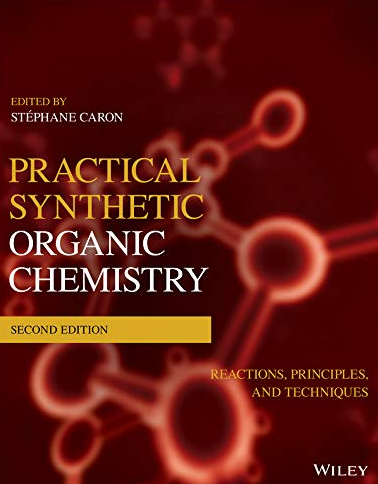
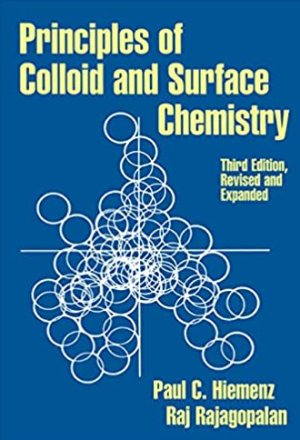
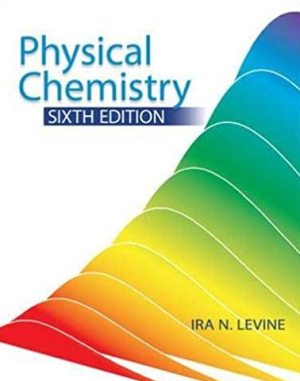
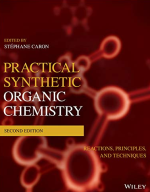
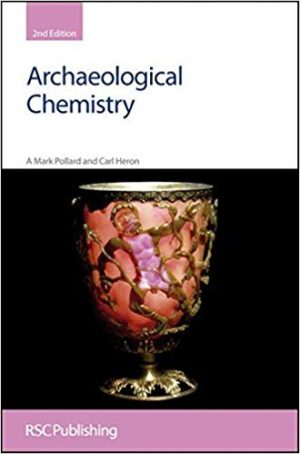
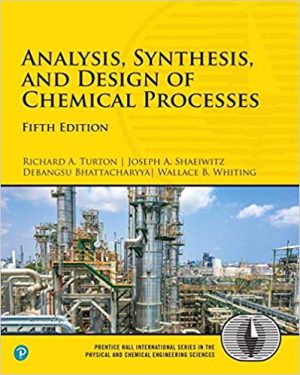
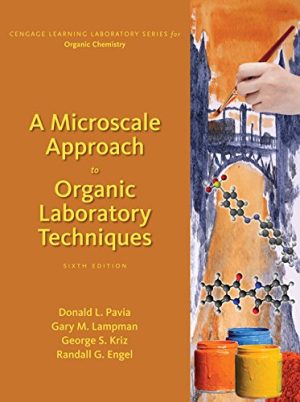

Reviews
There are no reviews yet.